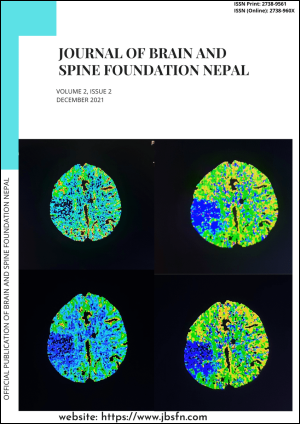Morphometric analysis of lumbar vertebrae using CT scans in Nepalese population
DOI:
https://doi.org/10.3126/jbsfn.v2i2.45119Keywords:
Lumber Vertebra, Computed Tomography, MorphometryAbstract
Introduction: Understanding anatomy of the lumbar vertebrae is necessary to achieve clinical success during surgery, for the development of the spinal implants and instruments and to understand changes in elderly and in male and female patients.
Methods: A cross-sectional study was done in 50 patients in Nepal to study the lumbar morphometric analysis of the vertebral body, intervertebral disc and spinal canal. Patients who underwent CT IVU for nephrolithiasis at our center were included for analysis of the lumbar morphometry. All the traumatic cases and pathological lesions, such as infection, tumor were excluded from the study. Patients having low backache due to probable intervertebral disc pathology were also excluded from the study. Data analysis was done from Microsoft excel and the mean, standard deviation and range were calculated.
Results: The anterior-posterior diameter of the vertebral body, varied from 25.97 mm at L1 to 29.39 mm at L5. The transverse diameter of the body ranged from 31.55 mm at L 1 to 44.13mm at L5. There were changes in height of body. First from L1 - L3 there was increase in height and from L4-L5 there was decrease in height with least height at L5 (22.71mm). According to our study the L1 vertebra has narrowest transverse diameter of spinal canal(21.25mm) whereas L4 has narrowest antero-posterior diameter of spinal canal(12.37mm).
Conclusion: In the lumbar area, detailed anatomical knowledge is critical for performing a safe operation. These findings give guidance to the surgeons during various approach while performing operative procedure like pedicle screws, vertebral body screws, cages and laminar hooks.
Downloads
Downloads
Published
How to Cite
Issue
Section
License
Copyright (c) 2021 Suman Paudel, Ananta Hari Paudel, Anuj Krishna Paudel, Benju Tilija Pun, Bikash Jang Kshetri, Sanjiv Bastakoti, Avinash Kumar Jha, Matsendra Jha

This work is licensed under a Creative Commons Attribution 4.0 International License.

